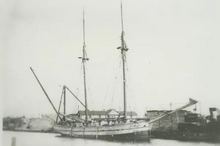
The Bermuda Triangle, also known as the Devil's Triangle, is an urban legend focused on a loosely defined region in the western part of the North Atlantic Ocean where a number of aircraft and ships are said to have disappeared under mysterious circumstances. The idea of the area as uniquely prone to disappearances arose in the mid-20th century, but most reputable sources dismiss the idea that there is any mystery.

Le Griffon was a sailing vessel built by French explorer and fur trader René-Robert Cavelier, Sieur de La Salle in the Niagara area of Canada in 1679.

Northwest Orient Airlines Flight 2501 was a DC-4 operating its daily transcontinental service between New York City and Seattle when it disappeared on the night of June 23, 1950. The flight was carrying 55 passengers and three crew members; the loss of all 58 aboard made it the deadliest commercial airliner accident in America at the time.
Poverty Island is a 186 acre uninhabited island in northern Lake Michigan. It is one of an archipelago of islands across the entrance to Green Bay and Big Bay de Noc commonly called the Potawatomi Islands, which are an outcropping of the Niagara Escarpment. The island is within Delta County in the U.S. state of Michigan. The surface is a mixture of forest and rocky outcroppings. The only structures are the Poverty Island Light Station (1875), an abandoned lighthouse and outbuildings which are in disrepair. Poverty Island is currently owned by the federal government.

The Bass Strait Triangle is the waters that separate the states of Victoria and Tasmania, including Bass Strait, in south-eastern Australia. The term Bass Strait Triangle appears to have been first used following the disappearance of Frederick Valentich in 1978 although the region had a bad reputation long before that.
Michigan Shipwreck Research Association (MSRA) is an American non-profit corporation based in Holland, Michigan. Formed in 2001 by the former directors of the committee which originally established the Southwest Michigan Underwater Preserve, their stated purpose is to "Preserve Michigan’s Submerged Maritime History." With the discovery of the steamer H. C. Akeley outside the boundaries of the preserve, the group broadened their area of focus and formed MSRA.
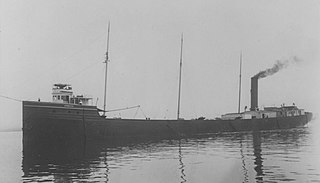
SS Appomattox was a wooden-hulled, American Great Lakes freighter that ran aground on Lake Michigan, off Atwater Beach off the coast of Shorewood, Wisconsin in Milwaukee County, Wisconsin, United States in 1905. On January 20, 2005 the remnants of the Appomattox were listed on the National Register of Historic Places.
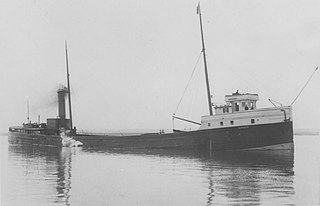
The SS Marquette was a wooden-hulled, American Great Lakes freighter built in 1881, that sank on Lake Superior, five miles east of Michigan Island, Ashland County, Wisconsin, Apostle Islands, United States on October 15, 1903. On the day of February 13, 2008 the remains of the Marquette were listed on the National Register of Historic Places.

SS M.M. Drake was a wooden steam barge that towed consorts loaded with coal and iron ore on the Great Lakes. She came to the rescue of the crews of at least four foundering vessels in her 19-year career only to meet the same fate in her final rescue attempt. Drake sank in 1901 off Vermilion Point after a rescue attempt of her consort Michigan. Her rudder, anchor, and windlass were illegally removed from her wreck site in the 1980s. They are now the property of the State of Michigan. The rudder is on display as a loan to the Great Lakes Shipwreck Museum and the anchor and windlass are on loan for display to Whitefish Township Community Center. The wreck of Drake is protected as part of an underwater museum in the Whitefish Point Underwater Preserve.
Queen of the Lakes is the unofficial but widely recognized title given to the longest vessel active on the Great Lakes of the United States and Canada. A number of vessels, mostly lake freighters, have been known by the title.

Gallinipper was a schooner that sank in Lake Michigan off the coast of Centerville, Manitowoc County, Wisconsin, United States. In 2010, the shipwreck site was added to the National Register of Historic Places.
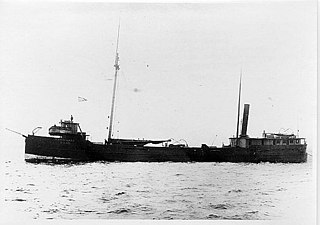
R. J. Hackett was a steamer built in 1869 in Cleveland, Ohio, by Peck & Masters. When the ship was first launched, both its wide cross-section and long midships hold were unconventional. The design's clear advantages in moving cargo through the inland lakes quickly resulted in many imitators.
The Lumberman was a 3-masted schooner that sank in 1893 in Lake Michigan off the coast of Oak Creek, Wisconsin, United States. In 2009 the shipwreck site was added to the National Register of Historic Places.

SS Clifton, originally Samuel Mather, was a whaleback lake freighter built in 1892 for service on the Great Lakes. She was 308 foot (94 m) long, 30 foot (9.1 m) beam, and 24 foot (7.3 m) depth, and had a 3,500 ton capacity. The self-propelled barge was built by the American Steel Barge Company in West Superior, Wisconsin. Her builders used a design well-suited to carry iron ore, her intended trade. The new vessel was christened Samuel Mather, after a cofounder of Pickands Mather and Company, which at the time was the second largest fleet on the Great Lakes.
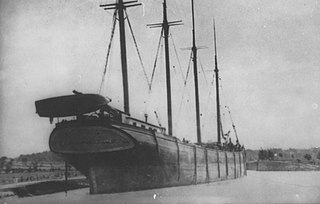
Minnedosa was a four-masted wooden Great Lakes schooner launched in 1890. This was late in the era of sailing ships and it spent its career as a schooner barge, towed by a steam tug. It was lost with its nine crew and passengers and a heavy load of grain in a storm October 20, 1905 on Lake Huron.

SS Choctaw was a steel-hulled American freighter in service between 1892 and 1915, on the Great Lakes of North America. She was a so-called monitor vessel, containing elements of traditional lake freighters and the whaleback ships designed by Alexander McDougall. Choctaw was built in 1892 by the Cleveland Shipbuilding Company in Cleveland, Ohio, and was originally owned by the Lake Superior Iron Company. She was sold to the Cleveland-Cliffs Iron Company in 1894 and spent the rest of her working life with it. On her regular route between Detroit, Escanaba, Marquette, and Cleveland, she carried iron ore downbound, and coal upbound.

Antelope was a Great Lakes steamship that later was converted into a schooner barge) and sank in Lake Superior near the Apostle Islands in 1897.
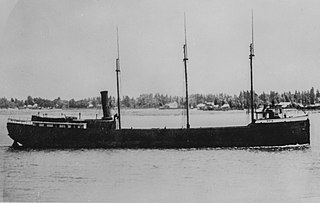
SS Ohio was a wooden hulled Great Lakes freighter that served on the Great Lakes of North America from her construction in 1875, to her sinking in September 1894 when she collided with the schooner barge Ironton which also sank in the collision. Ironton was being towed by the steamer Charles J. Kershaw, which was also towing the schooner Moonlight. Ohio was found upright in 2017, over 122 years after her sinking in over 200 feet of water off Presque Isle, Michigan. In March, 2023, it was announced that Ironton had been located in 2019. The researchers who discovered Ohio plan to nominate her for a listing in the National Register of Historic Places.

SS Vernon was a wooden-hulled American passenger and package freighter that sank in a Lake Michigan storm on October 29, 1887, near Two Rivers, Wisconsin, with the loss of between 36 and 50 lives, making her one of the deadliest shipwrecks ever to have occurred in Wisconsin. Only one of the people on board survived.




